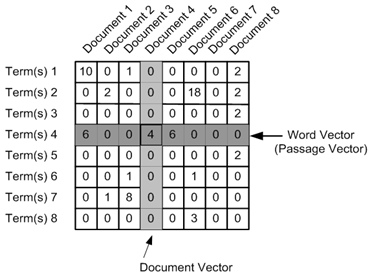Document clustering
Cluster Analysis in Python

Shaumik Daityari
Business Analyst
Document clustering: concepts
- Clean data before processing
- Determine the importance of the terms in a document (in TF-IDF matrix)
- Cluster the TF-IDF matrix
- Find top terms, documents in each cluster
Clean and tokenize data
- Convert text into smaller parts called tokens, clean data for processing
from nltk.tokenize import word_tokenize import re def remove_noise(text, stop_words = []): tokens = word_tokenize(text)cleaned_tokens = [] for token in tokens: token = re.sub('[^A-Za-z0-9]+', '', token)if len(token) > 1 and token.lower() not in stop_words: # Get lowercase cleaned_tokens.append(token.lower()) return cleaned_tokensremove_noise("It is lovely weather we are having. I hope the weather continues.")
['lovely', 'weather', 'hope', 'weather', 'continues']
TF-IDF (Term Frequency - Inverse Document Frequency)
- A weighted measure: evaluate how important a word is to a document in a collection
from sklearn.feature_extraction.text import TfidfVectorizertfidf_vectorizer = TfidfVectorizer(max_df=0.8, max_features=50, min_df=0.2, tokenizer=remove_noise)tfidf_matrix = tfidf_vectorizer.fit_transform(data)
Clustering with sparse matrix
kmeans()in SciPy does not support sparse matrices- Use
.todense()to convert to a matrix
cluster_centers, distortion = kmeans(tfidf_matrix.todense(), num_clusters)
Top terms per cluster
- Cluster centers: lists with a size equal to the number of terms
- Each value in the cluster center is its importance
- Create a dictionary and print top terms
terms = tfidf_vectorizer.get_feature_names_out() for i in range(num_clusters): center_terms = dict(zip(terms, list(cluster_centers[i])))sorted_terms = sorted(center_terms, key=center_terms.get, reverse=True)print(sorted_terms[:3])
['room', 'hotel', 'staff']
['bad', 'location', 'breakfast']
More considerations
- Work with hyperlinks, emoticons etc.
- Normalize words (run, ran, running -> run)
.todense()may not work with large datasets
Next up: exercises!
Cluster Analysis in Python



